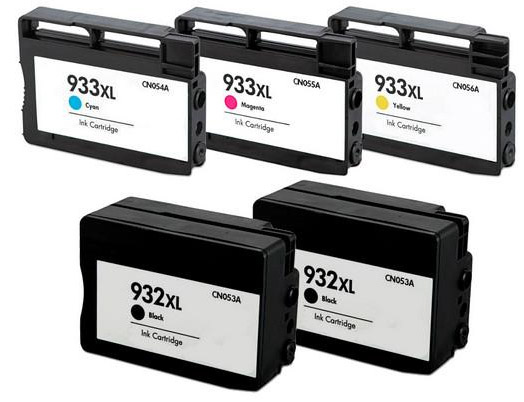If you’re eco-conscious and feel a small wave of guilt every time you throw away another ink or toner cartridge, you’re not alone. The good news is that like-minded folks within the industry have already come up with some creative solutions to reduce the environmental impact and waste generated by discarded ink and toner. Here are some of their brilliant innovations.
Cartridge Recycling
It’s been estimated that over 350 million ink cartridges in North America alone end up in landfills every year. That’s a number almost too high to fathom, but one thing’s for certain: that’s a lot of plastic sitting around doing nothing but slowly leach chemicals. It’s even worse if the cartridges end up floating in the ocean—as all too many waste products do—because the effect on marine life is immediate and deadly.
There’s a lot of doom-and-gloom statistics about the waste of our modern consumerist lifestyle, but you don’t have to sit around feeling helpless about it. You probably already recycle cans, glass and cardboard, so why not recycle your ink cartridges as well?
For many people, it seems like a hassle to recycle ink cartridges because you can’t simply pop them into the same recycling bin as, say, your plastic milk cartons. However, you do have several options.
One way to recycle cartridges is to contact the manufacturer directly and request postage-paid bags or envelopes in which to return the empty cartridges to their facilities.
You can also drop off your empty ink at big-box stores, which often have collection points designed specifically for this purpose. Some charities also have collection points in malls or other high-traffic locations.
It takes a little bit of planning at first in order to decide the easiest way for you to recycle your cartridges, but after that initial trip, it’ll be no sweat.
Re-Manufactured Ink Cartridges
Once your recycled cartridges find their way back to the manufacturer, what happens next? Typically the manufacturer will refill the cartridge and replace any broken or missing parts, if possible. It is then sold as a “re-manufactured” cartridge, which is often cheaper than a brand spankin’ new cartridge.
What’s more, cartridges can be re-manufactured as many as 3-4 times, keeping up to 2 pounds of waste out of landfills and saving 2 ounces of oil every time. There’s simply a lot that goes into making a new cartridge than the average person probably realizes.
So if you’re totally committed to being environmentally friendly in as many ways as possible, you can support cartridge recycling efforts by buying re-manufactured ink. Do be sure to do your homework, though, as some re-manufactured ink cartridges may not be compatible with your machine.
Refill Your Own Ink
If you’re not only environmentally-conscious, but also a do-it-yourself-er, refilling your own ink cartridges is probably an exciting proposition. Ink itself is not usually expensive, but the cartridge is. Reusing the same cartridges can help you save money as well as keep unnecessary plastic out of the landfills.
Ink refill kits usually come with a nifty syringe that you use to refill the cartridge with as little spillage as possible. Things might get a little messy the first time around, so it’s advisable that you lay out some newspapers to soak up any spilled ink. And always be sure to refill ink away from your printer!
Eco-Friendly Ink and Toner
Finally, you can choose to really make an impact by using soy-based ink and toner. Regular ink and toner uses petroleum—in other words, oil—as its base in order to carry the pigment. As you know, oil is a non-renewable resource, and an expensive and polluted one at that.
But fear not! Soy and other vegetable-based inks are on the rise. With the growing commitment of many businesses to adopt eco-friendly habits, soy ink is entering the mainstream and is more affordable and available than ever. You can also buy palm oil-based toners.
Another advantage to using vegetable-based inks is that you can easily recycle or compost paper materials printed this way. Petroleum-based inks will leach toxic chemicals into the soil and water, but vegetable-based inks and toners do not pose such a risk.
The bottom line is this: inks and toners, as well as their cartridges, don’t have to be a nagging thorn in your side when it comes to saving the planet. Every cartridge kept out of a landfill is a victory. If you’d like to increase your own impact even more, be sure to share this with friends, family members and co-workers. You might even consider setting up a cartridge collection point at your workplace. There are so many possibilities, you can surely find a way to pitch in.


